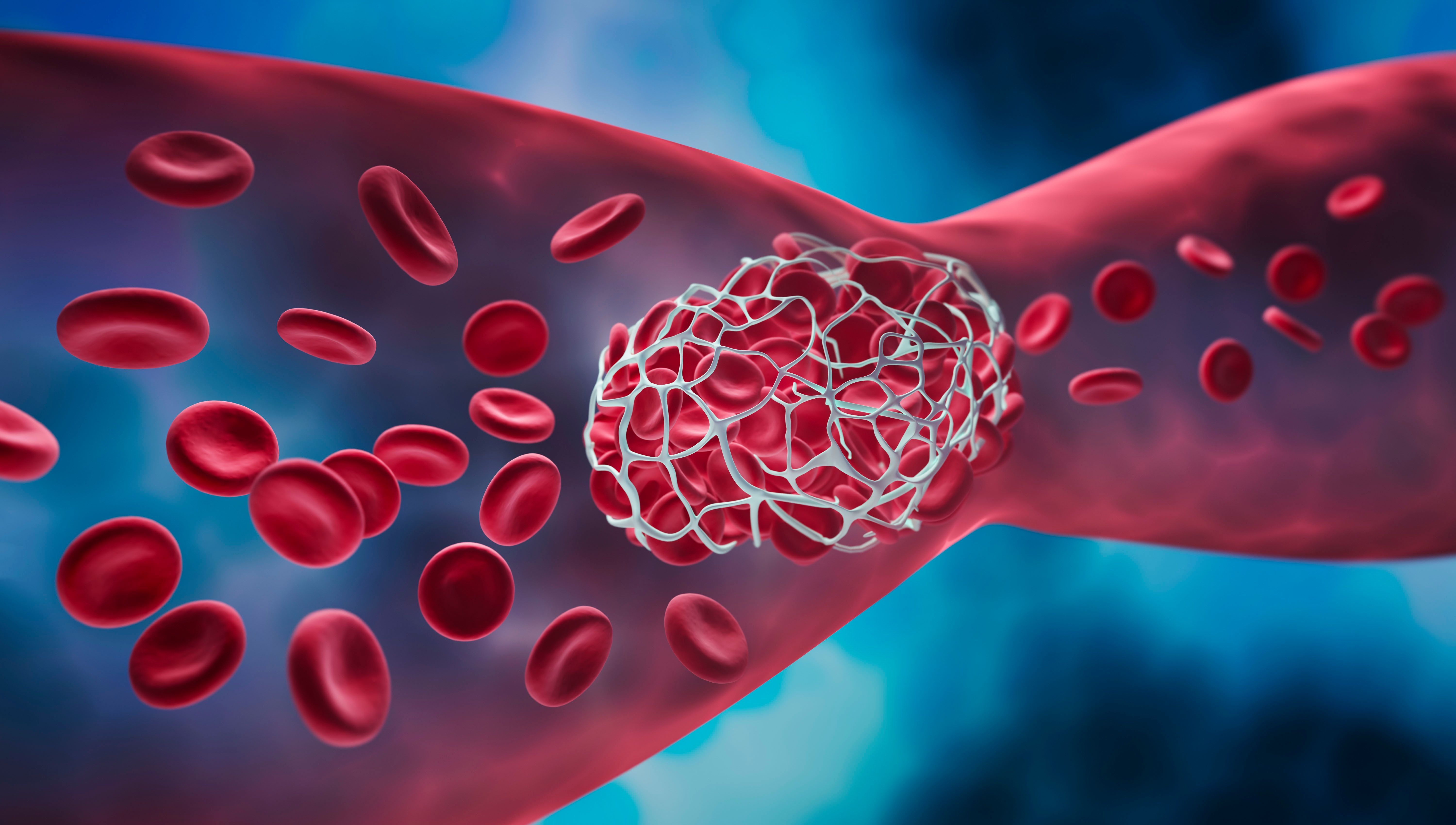Risk of Blood Clots Remains for Nearly a Year After COVID-19 Infection
In 2020 alone, the COVID-19 pandemic may have caused an additional 10500 heart attacks, strokes, and other blood clot complications across England and Wales.

Blood clotting is a significant cause of death in COVID-19 patients. However, a new study, published in the journal Circulation, found that the risk of blood clots may remain for almost a year after acute COVID-19 infection.
“The effect that coronavirus infection has on the risk of conditions linked to blood clots is poorly studied,” said William Whiteley, PhD, a clinical epidemiologist and neurologist at the University of Edinburgh and a co-leader of this study. “Evidence-based ways to prevent these conditions after infection will be key to reducing the pandemic’s effects on patients.”
The research team included investigators from the Universities of Bristol, Cambridge, Edinburgh, and Swansea. They studied the populations of England and Wales to compare the risk of blood clots after COVID-19 infection to the risk of blood clots for unrelated reasons.
From January 1-December 7, 2020, the investigators studied vascular diseases after COVID-19 diagnosis. They utilized population-wide, anonymized English and Welsh electronic health records for their analysis.
A total of 48 million unvaccinated adults were included in the analysis. The investigators found that in the first week after COVID-19 diagnosis, people were 21 times more likely to have a heart attack or stroke.
After 4 weeks, COVID-19 patients were 3.9 times more likely to have a heart attack or stroke. These conditions were primarily caused by blood clots blocking arteries.
Conditions caused by blood clots in the veins, including deep vein thrombosis and pulmonary embolism, are potentially fatal. Blood clots in the veins were 33 times more likely in the first week after COVID-19 diagnosis. After 4 weeks, the risk dropped to 8 times higher.
The elevated risk of blood clots after acute COVID-19 remained for the duration of the study. By weeks 26-49, the higher risk of blood clots decreased to 1.3 times more likely for artery clots, and 1.8 times more likely for vein clots.
Even people with mild-to-moderate COVID-19 infection exhibited the higher risk of blood clots. However, preventative strategies, including administering blood pressure medication to high-risk patients, reduced the incidence of serious or fatal clots.
Notably, these data were collected in 2020, during the first wave of the COVID-19 pandemic and before wide-scale vaccine rollout. During this time period, the investigators found COVID-19 caused an estimated 10500 additional cases of heart attacks, strokes, deep vein thrombosis, and other blot clotting conditions.
The incidence of vascular events after COVID-19 infection declines more rapidly for arterial thrombosis than for venous thromboembolic events. However, the risk of severe blood clots remained elevated for up to 49 weeks after COVID-19 diagnosis.
Overall, the risk of blood clots remains low. In highest risk individuals, including men over the age of 80, an additional 2 in 100 may have a stroke of heart attack after acute COVID-19 infection.
“We have shown that even people who were not hospitalized faced a higher risk of blood clots in the first wave,” said Angela Wood, PhD, a professor of biostatistics at the University of Cambridge, associate director of the British Heart Foundation Data Science Center, and study co-leader. “While the risk to individuals remains small, the effect on the public’s health could be substantial and strategies to prevent vascular events will be important as we continue through the pandemic.”
